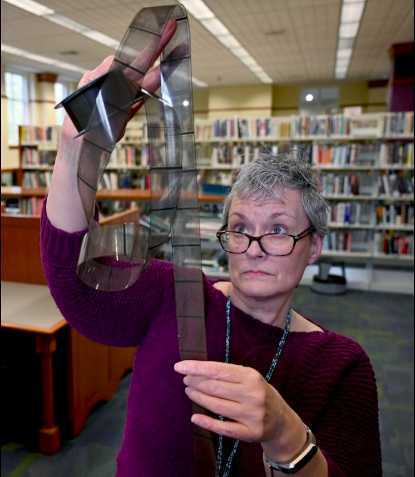
Advantage Archives Is Partnering With Communities To Ensure Their Past Has A Future
The only true way to ensure the survival of your community’s printed history is through the preservation of microfilming. Archived content will be available for future generations and can be accessed by anyone with a magnifying glass and some light IF the microfilm collection is appropriately produced, handled, and maintained. Are you confident that your microfilm holdings are “healthy”?
If you have microfilm that was produced after the early 1930s, but before the early 80s, it is highly probable that it is an acetate-based film stock, making them vulnerable, and the content archived on it could be “at-risk” of being lost.

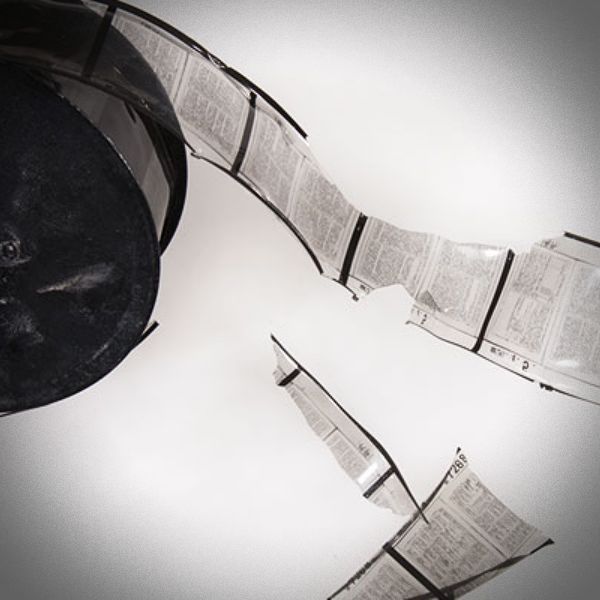
Vinegar Syndrome
Prior to 1980, microfilm produced with an acetate backing was often used to capture documents and newspapers. Unfortunately, this film base is susceptible to a “disease” known as “Vinegar Syndrome.”
Vinegar Syndrome is a chemical degradation of cellulose acetate film. It takes its name from the obvious vinegar smell, which is the identifying characteristic of the degradation process. It smells like vinegar because infected film releases acetic acid, the same substance in ordinary vinegar you might find in your kitchen cupboards.
Vinegar syndrome is also “contagious.” If a reel in your collection is infected, the other reels stored with could “catch it,” too. The autocatalytic nature of vinegar syndrome triggers the breakdown of any cellulose acetate film reels stored in close proximity.

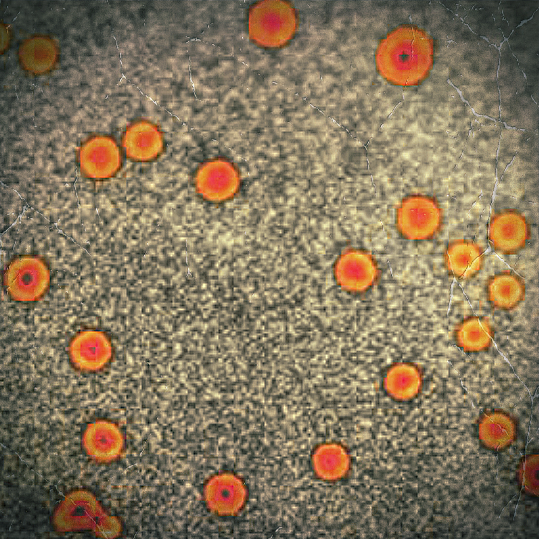
Redox
Microfilm can also suffer from another condition known as “redox.” Redox describes the process that forms the blemishes caused by a localized, cyclic reduction and oxidation of the silver in the image area. Redox appears most commonly on microfilm but may also appear on prints made that used silver in the development process.
Many kinds of defects and blemishes that occasionally appear on processed microfilm can be attributed to redox. Most commonly, redox blemishes are small circles outlined with concentric rings that alternate between dark and light. They are frequently in shades of brown or yellow and often seen centered on scratches in your film, sometimes closely packed, like water droplets on a spiderweb.

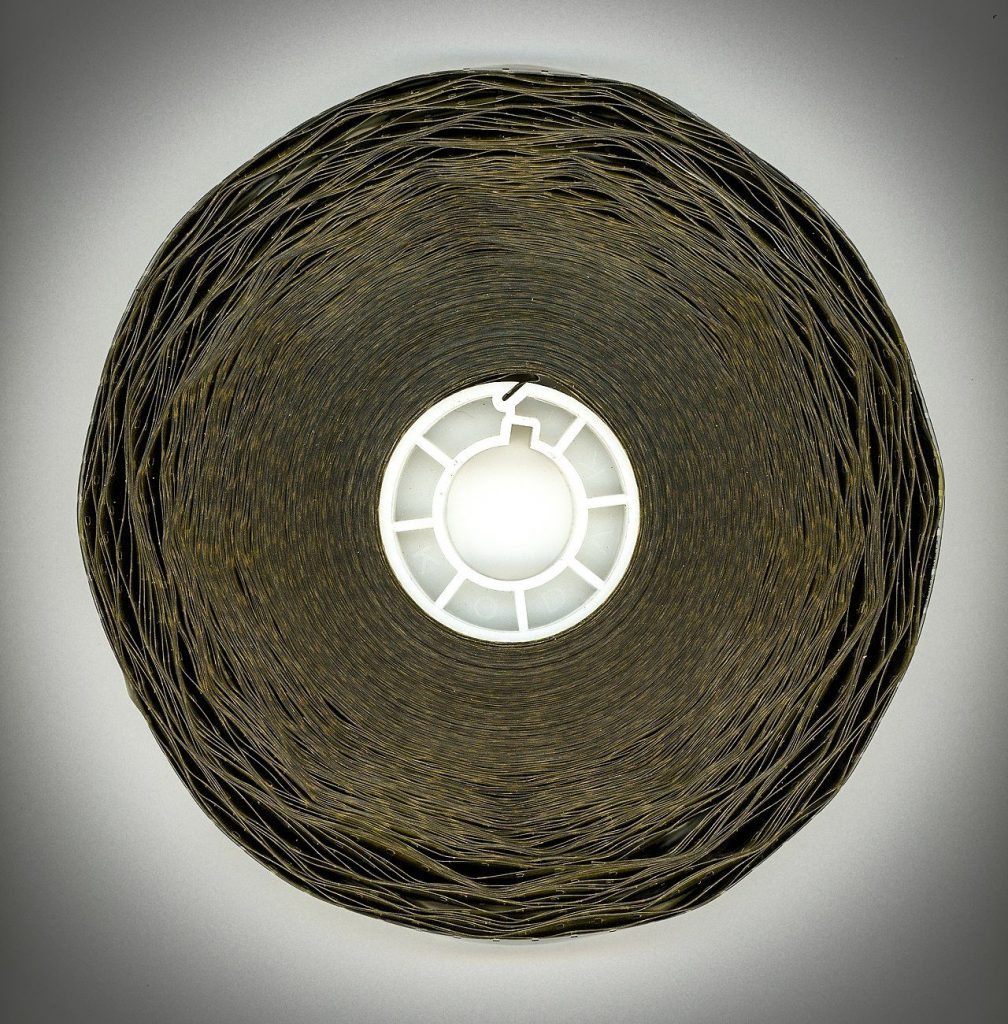
First, Identify At-Risk Film
Advantage Archives recognizes that both resources and time are limited commodities in most organizations, and it is difficult to perform a full audit of the integrity of your film archive or evaluate existing acetate-based microfilm collections on an annual basis. However, we recommend that you randomly select a sample of not less than 2% of the total number of reels in your collection and do a quick annual “health check” of your microfilm holdings.
Document any brittle film, microfilm with redox or other blemishes, the presence of vinegar syndrome, any discoloration, or any other condition that may jeopardize the life and longevity of your valuable archive.

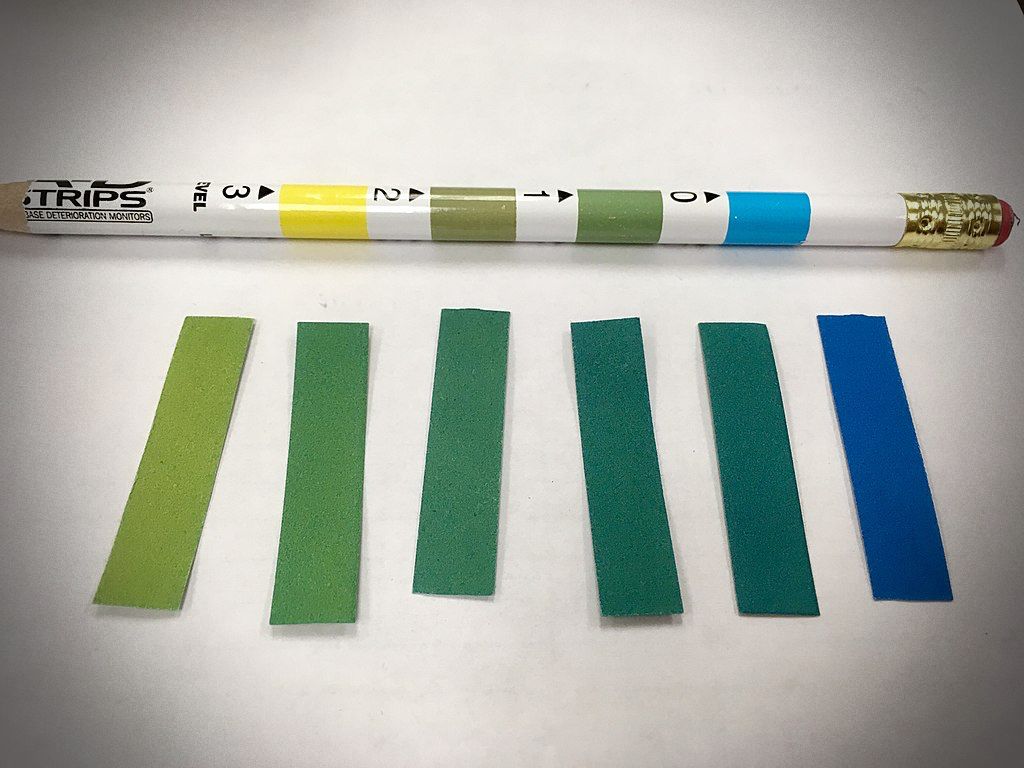
OK, Now What?
If you identify a suspect reel, immediately “quarantine” it away from your collection and test the reels stored near to the infected reel. A-D Strips are available to purchase from the Image Permanence Institute. These are dye-coated paper strips that provide a simple and safe method for detecting, measuring, and recording the severity of vinegar syndrome.
If you want to perform a more in-depth and thorough inspection, Guidelines for inspection are available and can be found in the ANSI/AIIM standards (section MS45-1990 can be purchased at the ANSI Webstore). In addition to common microfilm maladies, you may want to take the opportunity to check the reels for quality and adherence to standards. This includes counting the number of physical splices (and butt splices as opposed to overlap splices) and that there are no rubber-based adhesives contained in any tape material used. A content inventory can also be helpful in determining gaps in coverage, missing dates, and/or incorrect labeling.

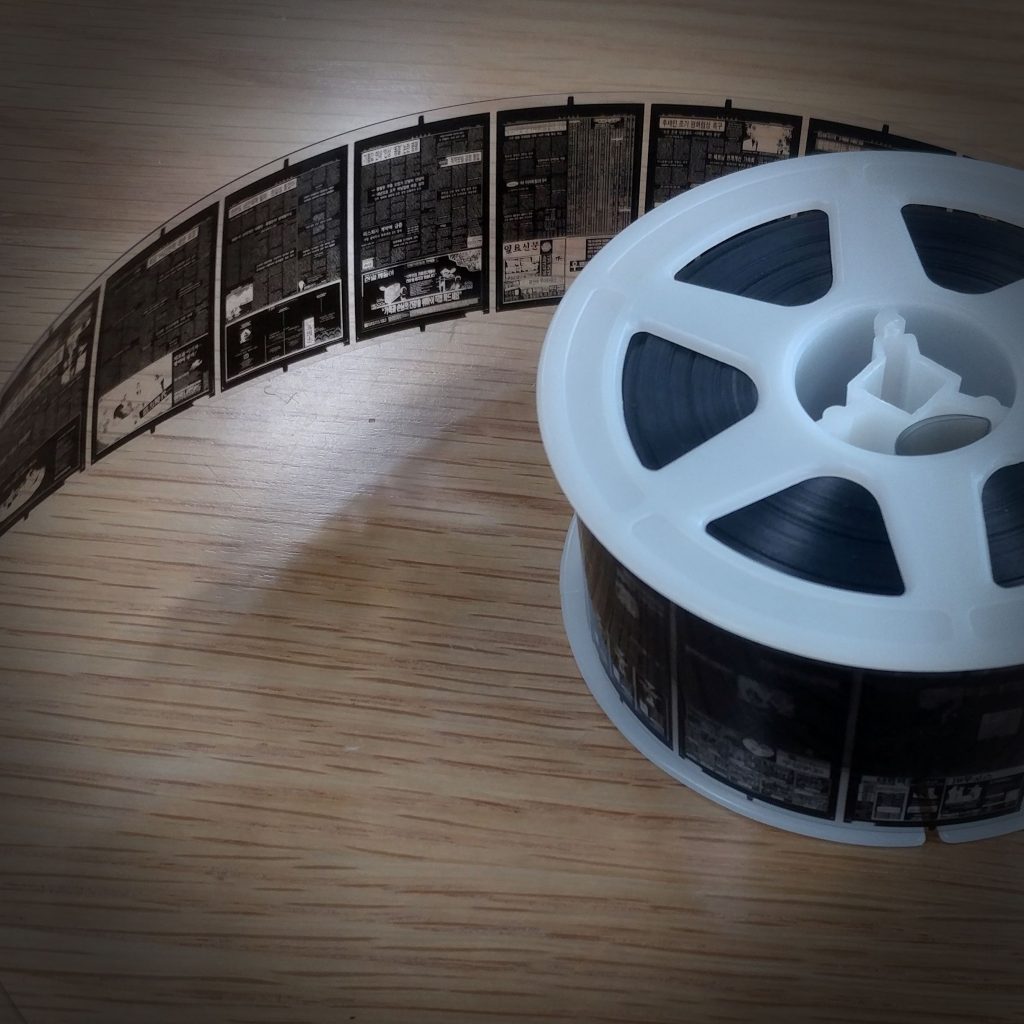
Don’t Worry; We Can Help!
Advantage Archives prides itself not only on meeting but exceeding ANSI/AIIM (Association for Information and Image Management) standards for the production, processing, duplicating, and storage of microfilm as an archival medium. We also have built our process upon specifications once developed by the Research Libraries Group (RLG) and guidelines written by the National Archives, as well as the Library of Congress. This requires stringent adherence to internal Advantage guidelines regarding the careful production and examination of all archival microfilm, in addition to well-controlled storage and handling conditions.
By reformating the 35mm acetate microfilm master to archival quality, polyester-based silver halide film, you will mitigate the risk to your collection and ensure that your community’s history is available for the next half-century.
Pick a time and day that work for you, and we will set up a telephone or video meeting to discuss how Advantage can help you and your community.

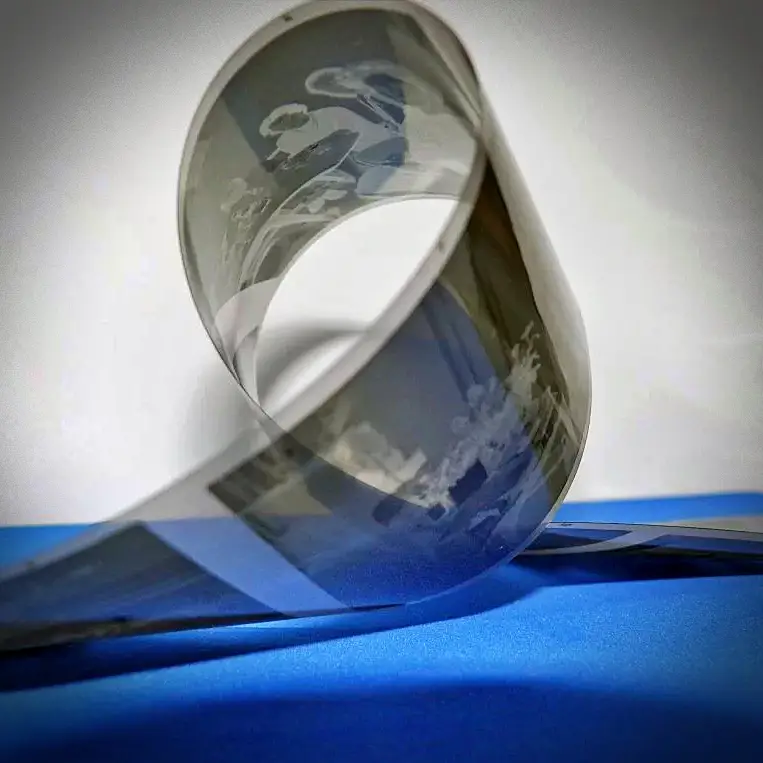
Duplicating The 35mm Master To Silver Halide Microfilm
The only proven long-term preservation method for newspaper & document preservation: Capturing content onto 35MM silver halide archival quality microfilm.
This polyester-based microfilm is the only medium currently recommended for preservation microfilming. Silver halide is a gelatin film composed of very fine grains of silver and is the most light-sensitive of all the bases used in microform. These characteristics allow for the greatest amount of detail to be captured in the film and provide the richest tonal variance. As a result, silver halide microfilm offers the most faithful reproduction of the source document.
Archival quality microfilm is a stable and durable medium that has a life expectancy of over 500 years under the proper storage and handling conditions.

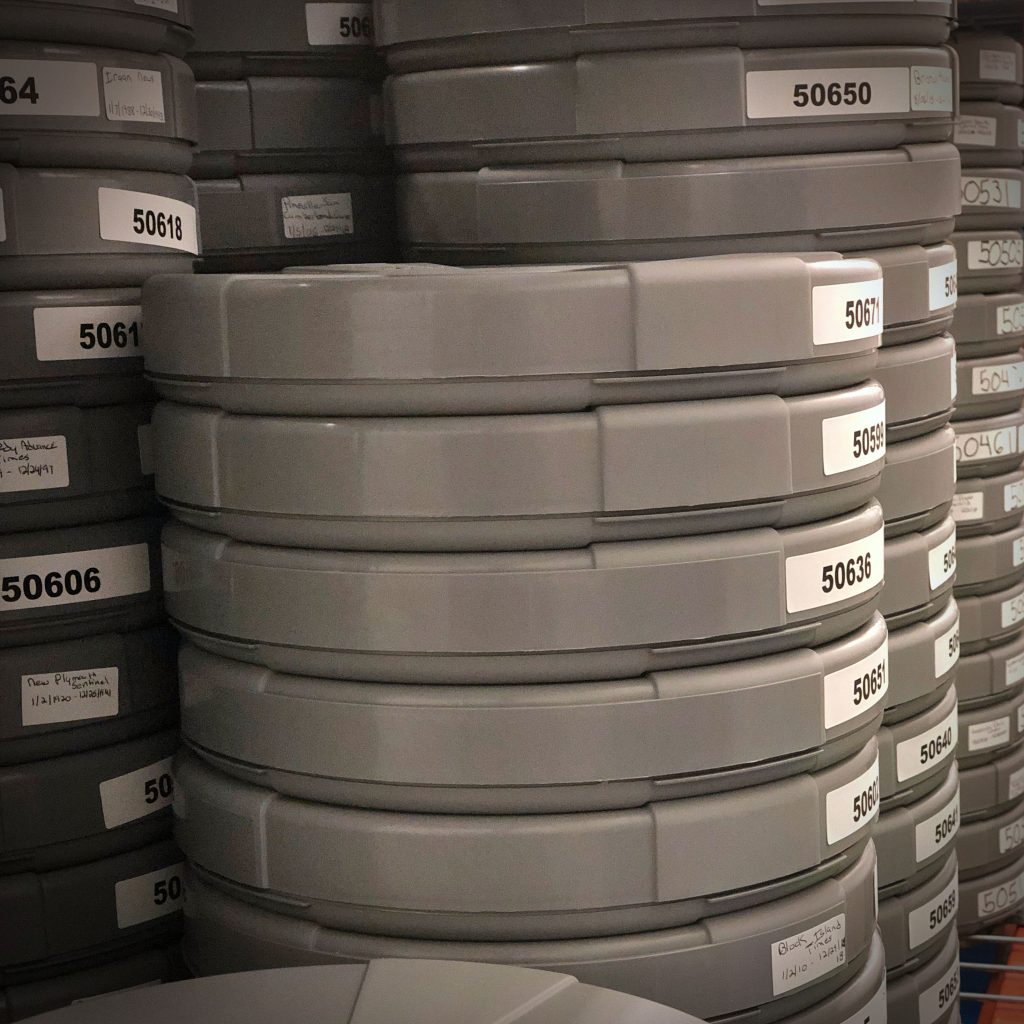
Microfilm Storage
Proper storage can help mitigate the risk to your microfilm collection and ensure it meets the 500-year life expectancy target. All microfilm should be stored in a temperature and humidity-controlled environment.
Ideal storage conditions for microfilm masters consist of a 67-degree base temperature that does not exceed 70 degrees with a constant relative humidity of 35%. These conditions should not vary more than 5% in a 24-hour period.
In addition, the master film should be stored on 1,000-foot reels (as opposed to the 100′ reels used for your service copies) in a non-reactive container.
Only chemically stable materials such as non-corrosive metals (anodized aluminum or stainless steel), peroxide-free plastics, and acid-free paper should be used for containers to ensure no degradation is caused to the image. Container label information should include an identification number or barcode to allow for cataloging the location and contents.
Interested In Having Advantage Store Your Microfilm Masters?
Tell us how we can help you safeguard your community’s history from being lost to the ravages of time:


Microfilm And Digitization Should Co-Exist
If digitization is a higher priority than preservation, I urge you to look at microfilm as your “analog backup” for your digital images. New digital images can be created from quality microfilm, now or in the future. For example, suppose a digital file is lost due to hardware failures, lack of redundancy, or absolution of technology. In that case, you can “restore” your digital image from your “analog backup” by rescanning the microfilm.
Properly preserved microfilm content will also allow you to “upgrade” your archive as technology advances, processes become more efficient, and things like hardware, software development, infrastructure, and bandwidth become increasingly affordable.


Proud To Preserve Our Partner’s Past
Learn More About Advantage’s Preservation Microfilming Services And The High Standards We Hold Ourselves To When It Comes To Archiving Our Partner’s History!


Don’t Just Take Our Word For It!
See what some of our partners from around Iowa have to say about their relationship with Advantage Archives, their Community History Archive, or the importance of making Iowa’s history more accessible.













